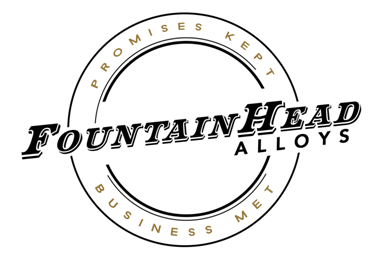Alloys 254 / 254 SMO / 6 Mo is an austenitic stainless steel with a high molybdenum content. Coupled with Nickel and Copper this gives the alloy a good resistance to pitting and crevice corrosion, especially in environments containing halide ions, e.g. chloride, bromide and fluoride solutions.
254 SMO (UNS S31254) may offer a cost effective solution to Nickel and Titanium alloys in these environments.
| Alloy |
Common Name |
Related Specifications |
Tensile Strength |
Proof Stress |
Elongation |
| British |
European |
United States |
| Alloy 254 |
254SMO |
|
1.4547 |
ASTM A479/A473,
/A240 S31254
F44 |
655
[95] |
305
[44.2] |
35 |
Alloy 254 Technical Information
| Alloy 254 Bar stock sizes available |
Diameter
(in) |
Diameter
(mm) |
kg per m |
| 3/8 |
9.53 |
0.57 |
| 1/2 |
12.70 |
1.01 |
| 5/8 |
15.88 |
1.58 |
| 3/4 |
19.05 |
2.28 |
| 7/8 |
22.23 |
3.10 |
| 1 |
25.40 |
4.05 |
| 1 1/4 |
31.75 |
6.33 |
| 1 3/8 |
31.75 |
6.33 |
| 1 1/2 |
34.93 |
7.66 |
| 1 3/4 |
44.45 |
12.41 |
| 2 |
50.80 |
16.21 |
| 2.36 |
60 |
22.62 |
| 2.56 |
65 |
26.55 |
| 2.76 |
70 |
30.79 |
| 2.95 |
75 |
35.34 |
| 3.15 |
85 |
40.21 |
| 3.54 |
90 |
50.89 |
| 3.94 |
100 |
62.83 |
| 4.33 |
110 |
76.03 |
| 4.72 |
120 |
90.48 |
| 5.12 |
130 |
106.19 |
| 6.10 |
155 |
150.95 |
| Specifications of Alloy 254 |
|
- Alloy 254 to MLA-MPS-254-BAR
- ASTM A479 Bar UNS S31254
- ASTM A276 Bar UNS S31254
- ASTM A182 Forgings UNS S31254 F44
- ASTM A240 Plate S31254
|
| Chemical Specification of Alloy 254 |
|
| Elements |
C |
Cr |
Fe |
Mo |
Mn |
N |
Ni |
Nb |
P |
S |
Si |
V |
| Minimum |
|
19.5 |
REMAINDER |
6.0 |
|
0.18 |
17.5 |
|
|
|
|
|
| Maximum |
0.02 |
20.5 |
|
6.5 |
1.0 |
0.22 |
18.5 |
|
0.03 |
0.01 |
0.8 |
| 0.2% Proof Stress (N/mm2 )[ksi] minimum |
300 [43.5] |
| Ultimate Tensile Strength (N/mm2) [ksi] minimum |
650[94.2] |
| Elongation (%) minimum |
35 |
| Hardness (HBN) |
270 max |
| Reduction of Area(%) minimum |
50 |
| Physical Properties of Alloy 254 |
|
| Density (Kg.m-3) |
8000 |
| Magnetic Permeability |
<1.05 |
| Young’s Modulus (N/mm2) |
200 x 103 |
| Specific Heat 20°C (J.Kg-1.°K-1) |
500 |
| Electrical resistance, 20°C (µ.O.m) |
0.85 |
| Thermal conductivity, 20°C (W.m-1.°K-1) |
13.5 |
| Applications of Alloy 254 |
|
| Chemical Process Industry: |
| Urea Production, Organic and Fatty Acids, High halide concentrations |
| Marine Industry and Shipbuilding: |
| Piping, Pumps, Valves, Heat exchangers |
| Oil and Gas Industry: |
| Heat exchangers, Piping, Valves, Pumps |
| Pulp and Paper Industry: |
| Bleach plant, vats, drums, press rolls, piping |
| Power Industry: |
| Flue gas scrubbers |
| Desalination plant: |
| Piping, Condensers |
- High strength compared to 316L and 317L austenitic stainless steels
- Excellent ductility and impact strength at both ambient and sub-zero temperatures
- Non-magnetic
- Higher resistance to abrasion, erosion and cavitation erosion than 316 and 317 stainless
- Listed in MR-01-75 for sour service oilfield applications
|
| Forms of Alloy 254 Available |
|
| Machining Advice of Alloy 254 – Hot worked and precipitation hardened |
|
| Operation |
Cutting Speed m/min (ft/min) |
Feed Rate
mm/rev (in/rev) |
Depth of cut mm (in) |
| Milling |
18 (58) |
0.13-0.25 mm/tooth
0.005-0.010 in/tooth |
0.2-3.0 (0.007-0.12) |
| Drilling 6.4mm(1/4″) dia |
250rpm |
0.075(0.003) |
| Drilling 12.7mm(1/2″) dia |
250 rpm |
0.125(0.005) |
| Drilling 25.4mm(1″) dia |
150 rpm |
0.28(0.011) |
| Turning – Roughing |
30 – 45 ( 100 – 150 ) |
0.4-0.5 (0.015-0.020) |
2.5 (0.1) |
| Turning – Finishing |
50 – 60 ( 165 – 200 ) |
0.13-0.20 (0.005-0.008) |
0.5 (0.02) |
| Tooling |
Milling/Turning: Carbide (SANDVIK GC 235, SECO T25M)
Drilling: HSS, point angle 118°, chisel angle 120° |
| Alloy Comparisons |
S20910 |
S32205 |
N05500 |
S31254 |
FERRALIUM 255-SD50 |
| (0.2% Proof Strength, N/mm2) |
420 |
510 |
690 |
325 |
610 |
| Corrosion Rate (mm.y-1)Seawater |
<0.01 |
<0.01 |
<0.18 |
<0.01 |
<0.01 |
| Corrosion Rate (mm.y-1)10% sulphuric acid at 80°C |
0.7 |
0.4 |
0.1 |
<0.15 |
<0.15 |
| Corrosion Rate (mm.y-1) Boiling 50% nitric acid |
0.18 |
<0.15 |
0.15 |
<0.15 |
<0.15 |
| Wear Properties related to Hardness (HRC) |
RC27 |
RC25 |
RC20 |
RC27 |
RC27 |
| KEY Features of Alloy 254 |
|
- Resistant to crevice corrosion in seawater
- Excellent corrosion resistance in seawater and concentrated halide environments
- High resistance to stress corrosion cracking
- Good resistance to erosion corrosion
- Excellent ductility and impact strength at both ambient and sub-zero temperatures
- Low magnetic permeability
|
Disclaimer
Data in this Alloy 254 page is provided solely for the purposes of distribution of information. Langley Alloys cannot make guarantees with respect to subject matter or accuracy of this information. Langley Alloys specifically disclaims all guarantees, expressed, implied or otherwise, including without limitation, all warranties of merchantability and fitness for a particular purpose.

